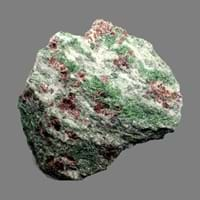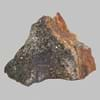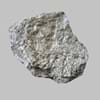Definition
Eclogite is an extreme metamorphic rock, formed by regional metamorphism of basalt rock under very high pressure and temperature
Obsidian is a naturally occurring volcanic glass formed as an extrusive igneous rock. It is produced when felsic lava extruded from a volcano cools rapidly with minimum crystal growth
Discoverer
René Just Haüy
Obsius
Etymology
From French, Greek eklogē selection with reference to the selective content of the rock + -ite1
From Latin obsidianus, misprint of Obsianus (lapis) (stone) of Obsius
Class
Metamorphic Rocks
Igneous Rocks
Sub-Class
Durable Rock, Medium Hardness Rock
Durable Rock, Medium Hardness Rock
Group
Not Applicable
Volcanic
Other Categories
Fine Grained Rock, Opaque Rock
Opaque Rock
Color
Black, Brown, Colourless, Green, Grey, Pink, White
Black, Blue, Brown, Green, Orange, Red, Tan, Yellow
Durability
Durable
Durable
Scratch Resistant
Yes
Yes
Appearance
Dull, Banded and Foilated
Shiny
Interior Uses
Decorative Aggregates, Interior Decoration
Decorative Aggregates, Interior Decoration
Exterior Uses
Paving Stone, Garden Decoration
Garden Decoration
Other Architectural Uses
Curbing
Not Yet Used
Construction Industry
Not Yet Used
Arrowheads, Cutting Tool, Knives, Scrapers, Spear Points
Medical Industry
In Chemical and Pharmaceutical Industry, Medicines and Cosmetics
Surgery
Antiquity Uses
Artifacts
Artifacts, Jewellery
Commercial Uses
Creating Artwork, Gemstone
Creating Artwork, Mirror, Used in aquariums
Types
Not Available
Fireworks Obsidian, Mahogany, Sheen Obsidian, Snowflake obsidian and Velvet Peacock Obsidian
Features
Available in Lots of Colors and Patterns, Generally rough to touch, Is one of the oldest rock
Blocks negativity, Helps to protect against depression
Archaeological Significance
Monuments
Not Yet Used
Not Yet Used
Famous Monuments
Not Applicable
Not Applicable
Sculpture
Not Yet Used
Not Yet Used
Famous Sculptures
Not Applicable
Not Applicable
Figurines
Not Yet Used
Not Yet Used
Formation
Eclogite forms from high-pressure metamorphism of mafic igneous rocks mainly, basalt or gabbro as it plunges into the mantle in a subduction zone.
When the lava is released from volcano, it undergoes a very rapid cooling which freezes the mechanisms of crystallization. The result is a volcanic glass with a uniform smooth texture.
Mineral Content
Amphibole, Coesite, Corundum, Dolomite, Garnet, Kyanite, Lawsonite, Paragonite, Phengite, Pyroxene, Quartz, Rutile, Zoisite
Not Available
Compound Content
Aluminium Oxide, NaCl, CaO, Carbon Dioxide, Iron(III) Oxide, Magnesium Carbonate, MgO, Sodium Oxide, Potassium, Sodium
Aluminium Oxide, CaO, Iron(III) Oxide, FeO, Potassium Oxide, MgO, MnO, Sodium Oxide, Phosphorus Pentoxide, Silicon Dioxide, Titanium Dioxide
Types of Metamorphism
Not Applicable
Burial Metamorphism, Cataclastic Metamorphism, Contact Metamorphism
Types of Weathering
Mechanical Weathering
Biological Weathering, Chemical Weathering, Mechanical Weathering
Types of Erosion
Chemical Erosion, Sea Erosion
Chemical Erosion, Coastal Erosion, Glacier Erosion
Grain Size
Fine Grained
Not Applicable
Fracture
Not Available
Conchoidal
Porosity
Less Porous
Very Less Porous
Luster
Subvitreous to Dull
Vitreous
Compressive Strength
Not Available
Cleavage
Perfect
Non-Existent
Toughness
Not Available
Not Available
Specific Gravity
2.86-2.87
2.6-2.7
Transparency
Opaque
Translucent
Density
3.2-3.6 g/cm3
2.6 g/cm3
Specific Heat Capacity
Not Available
Resistance
Heat Resistant
Heat Resistant, Impact Resistant
Deposits in Eastern Continents
Asia
India, Kazakhstan, Kuwait, Russia, South Korea, Thailand, Turkey
Afghanistan, Indonesia, Japan, Russia
Africa
Ethiopia, Morocco, South Africa
Kenya
Europe
France, Germany, Italy, Norway, Scotland
Greece, Hungary, Iceland, Italy, Turkey
Others
Greenland
Not Yet Found
Deposits in Western Continents
North America
Canada, Costa Rica, Panama, USA
Canada, Mexico, USA
South America
Argentina, Brazil, Colombia, Ecuador
Argentina, Chile, Ecuador, Peru
Deposits in Oceania Continent
Australia
Central Australia, New Zealand, Queensland
New Zealand
All about Eclogite and Obsidian Properties
Know all about Eclogite and Obsidian properties here. All properties of rocks are important as they define the type of rock and its application. Eclogite belongs to Metamorphic Rocks while Obsidian belongs to Igneous Rocks.Texture of Eclogite is Earthy whereas that of Obsidian is Glassy. Eclogite appears Dull, Banded and Foilated and Obsidian appears Shiny. The luster of Eclogite is subvitreous to dull while that of Obsidian is vitreous. Eclogite is available in black, brown, colourless, green, grey, pink, white colors whereas Obsidian is available in black, blue, brown, green, orange, red, tan, yellow colors. The commercial uses of Eclogite are creating artwork, gemstone and that of Obsidian are creating artwork, mirror, used in aquariums.










